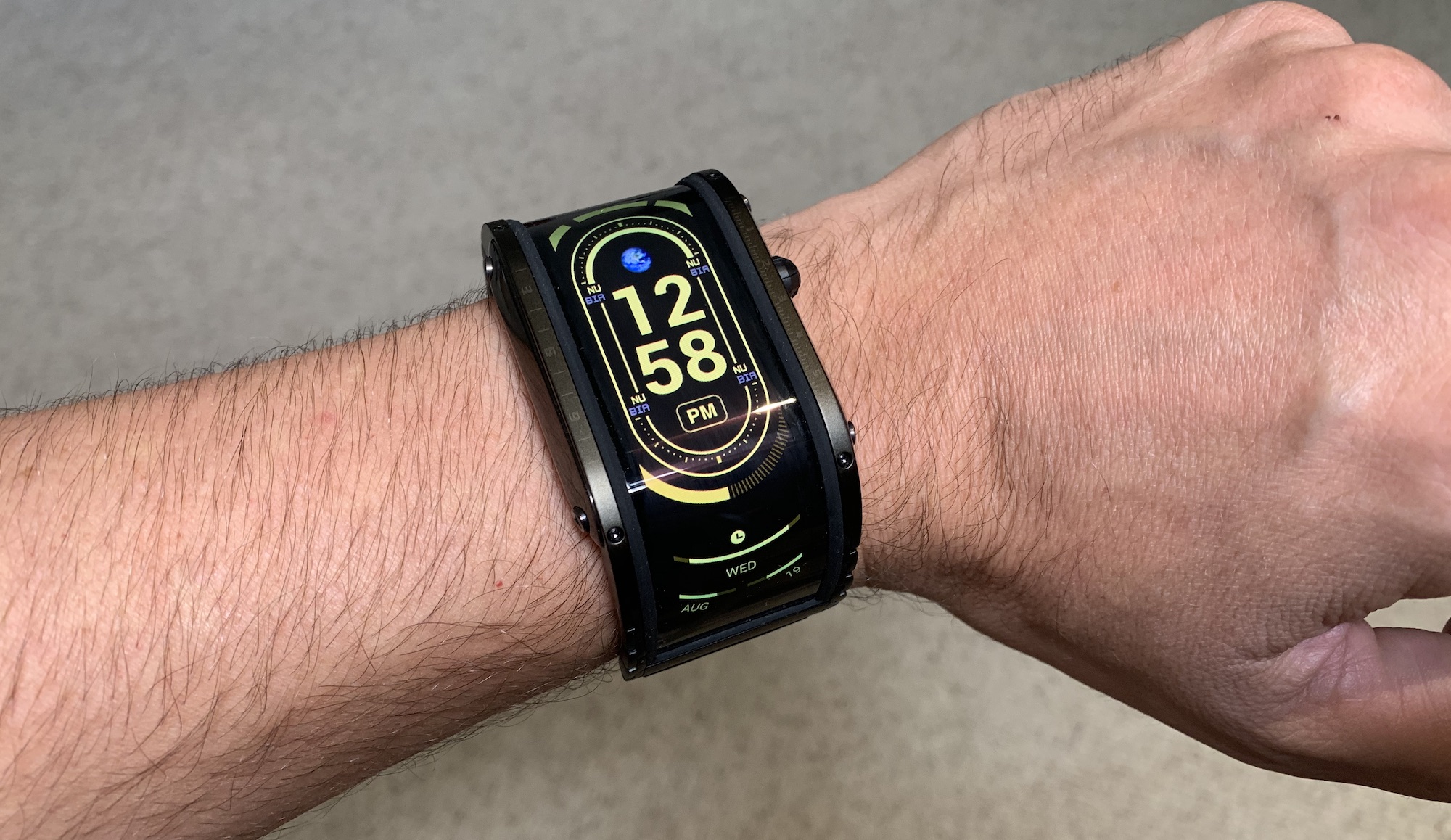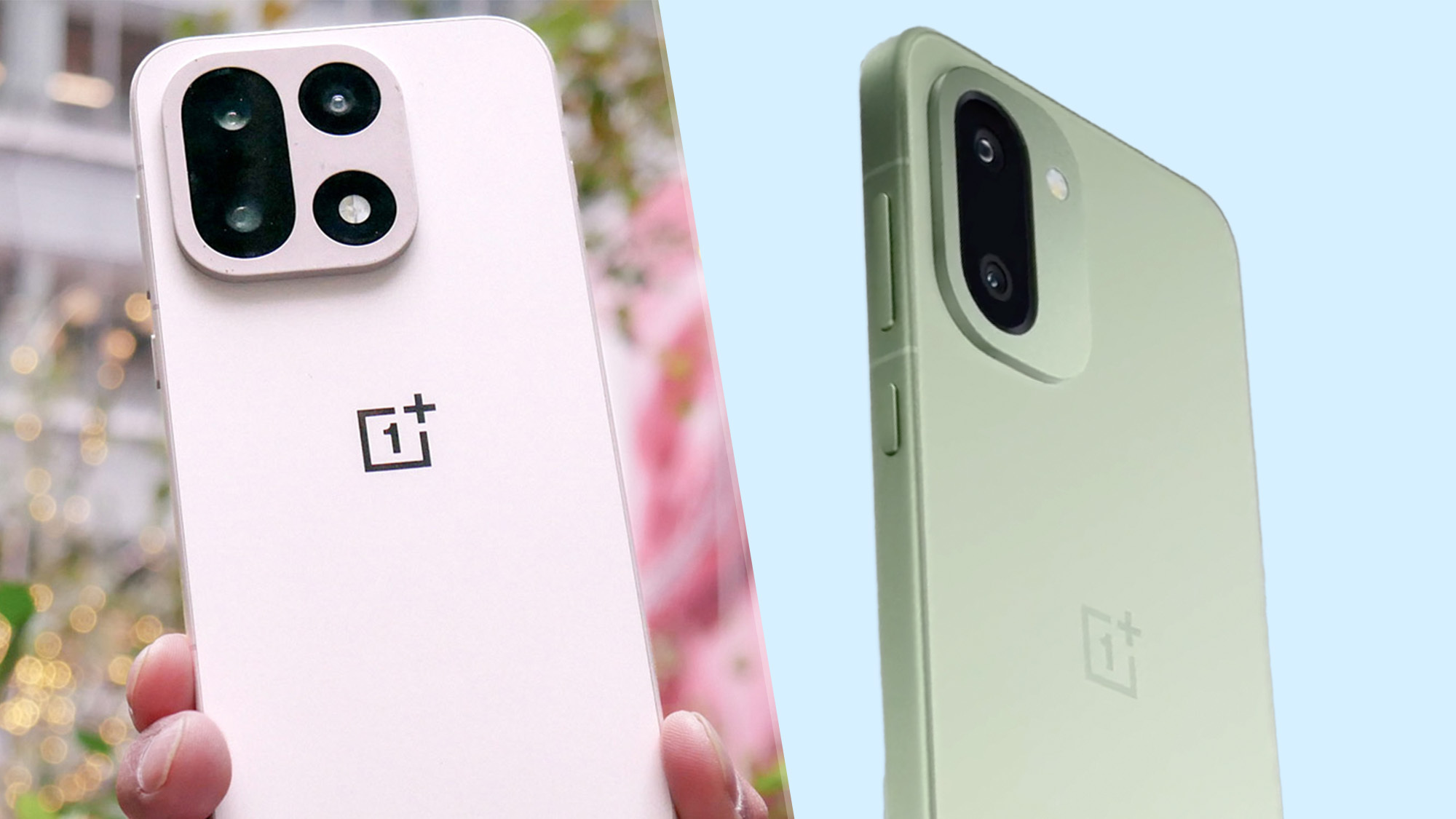Early Verdict
The Nubia Watch has an innovative design, but the software needs some work.
Pros
- +
Cool flexible AMOLED display
- +
Accurate GPS
Cons
- -
Bulky
- -
No app store
- -
Software needs some work
Why you can trust Tom's Guide
Smartwatches face a big problem: trying to cram a lot of information onto a small display. Some watch makers, like Apple, Samsung, and Google, tackle this through a multi-layered interface. Others, like the new Nubia Watch, simply try to give you a larger display.
The Nubia smartwatch, currently a Kickstarter project, has a large flexible AMOLED display that wraps halfway around your wrist. I’ve been testing out an overseas version of this smartwatch for a few days, and while the hardware is stunning, the software still needs some refinement before it can take on best smartwatches such as the Apple Watch 5 and Samsung Galaxy Watch 3.
- The best fitness trackers you can buy now
- Our picks for the best cheap smartwatches
Nubia Watch: Price and availability
The Nubia watch is available on Kickstarter. When — or if — it ships to the general public this October, the watch will cost $399. Early bird backers on Kickstarter can get it for $199; there are 500 early-bird slots available.
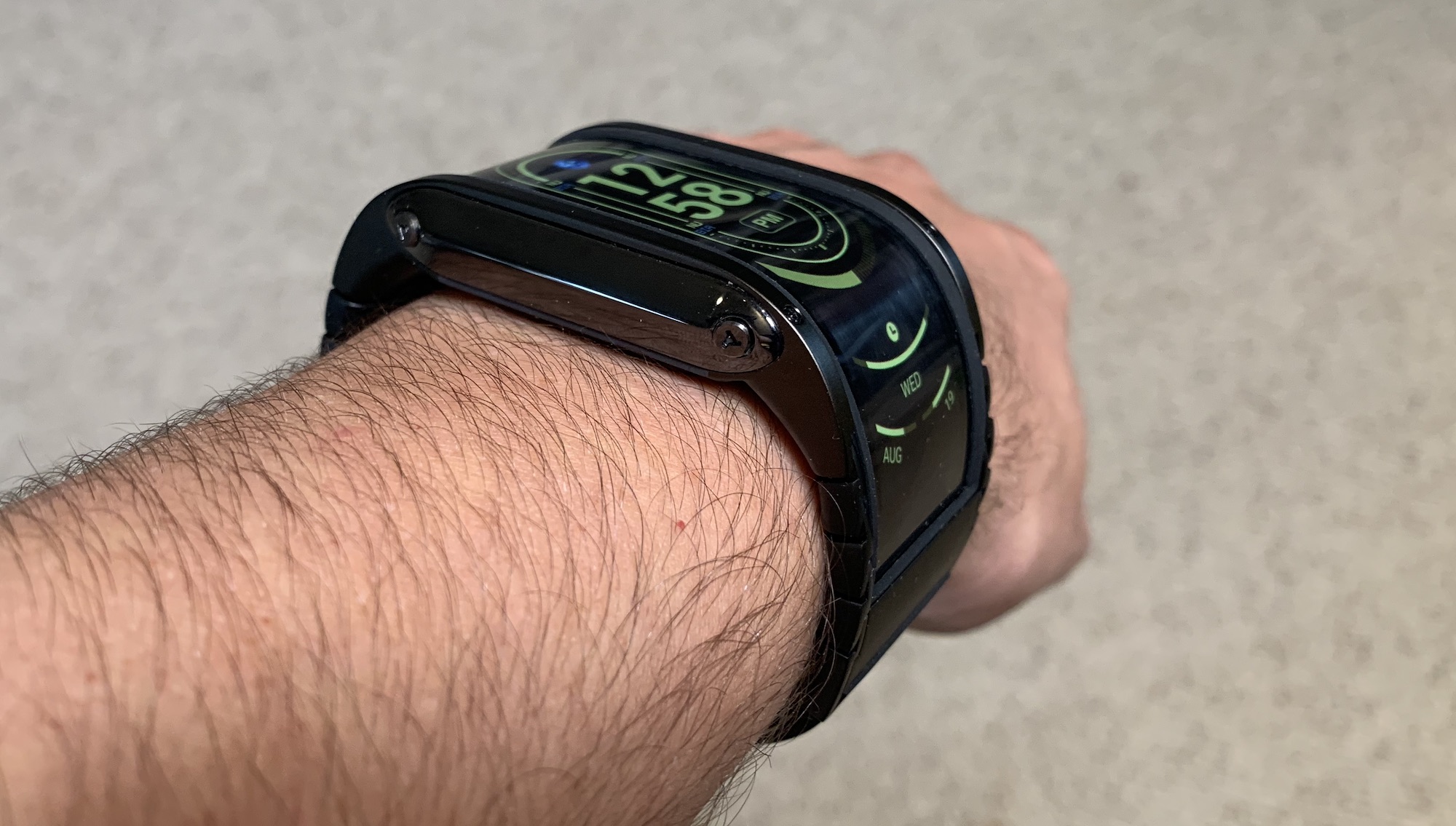
Nubia Watch: Design
The show-stopping feature of the Nubia Watch is its wraparound display. I changed the display setting to remain on, even though that shortens battery life, as the screen is too pretty not to look at. It looks less like a smartwatch and more like some other Sci-Fi device.
Nubia’s flexible AMOLED display is 4 inches long and about one inch wide, and it curved about halfway around my wrist. A somewhat thick bezel borders this substantial watch; it feels more like a chunky bracelet than a timepiece.
While the Nubia display is curved, it’s mostly fixed in place except for the very ends, which can bend to accommodate the strap around your wrist.
Although it fit the contours of my wrist well, I suspect those with smaller wrists will find the Nubia Watch cumbersome to wear. It’s also quite heavy: At 3.45 ounces, the Nubia Watch weighs an ounce and a half more than even the massive Garmin Fenix 6.
Get instant access to breaking news, the hottest reviews, great deals and helpful tips.
The Nubia Watch runs on a dated Qualcomm Snapdragon 2100 processor, but the watch felt pretty responsive as I scrolled through menus and selected various items. Other hardware includes Bluetooth, Wi-Fi-, GPS, and the ability to accept eSIMs — though this is only available overseas. The Nubia Wear has 8GB of onboard storage, but only about half of that can be used by the wearer.
The watch is IP54-rated for dust and water, so it can survive some splashes. It’s not as water-resistant as the Apple Watch or Samsung Galaxy Watch 3, both of which can go for a swim.
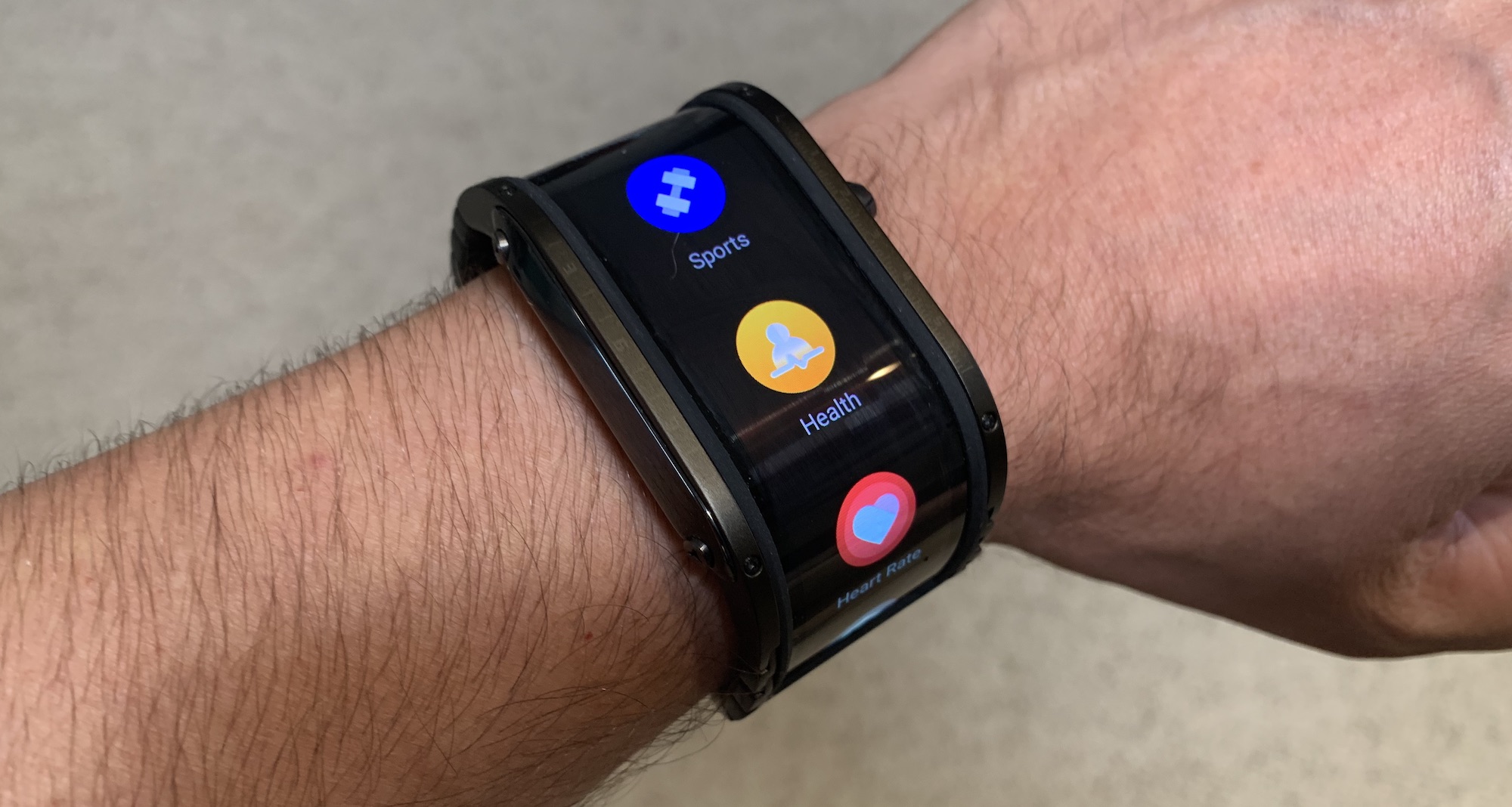
Nubia Watch: Display and interface
The Nubia Watch runs a custom Nubia wear OS, which feels like it has its roots in Wear OS. The main screen shows the time and date in the center of the display, with four colored bars coming from both ends, and pointing toward the middle. With a resolution of 960 x 192 pixels, the display looks very crisp
Swipe to the right or left, and you’re presented with a row of icons: Call, messages, Sports, Health, Heart Rate, Settings, Barrage, Weather, Compass, Schedule, Clock, SearchPhone, Music, and AliPay.
Swipe down from the home screen and you get quick access to settings, and swiping up shows you any notifications you may have.
The funky Barrage icon lets you put a virtual light show on the screen. There are four options you can choose, including one with Matrix-style letters that read Flex Your Life and fade as they scroll down the screen. You can also create your own Marquee in the Nubia smartphone app (Android and iOS), and send it to the watch. It’s not that useful, but is a fun way to show off the display.
Nubia Watch: Watch Faces
Press and hold the main watchface, and you’re presented with a dozen other faces that make full use of the Nubia’s screen.
A mostly amber watchface called Mars System, for example, shows the time in the center, but in the curved section facing you, you’ll see your heart rate, steps, date, and calories. There are other watch faces that look like clock gears, ones that show the weather, and one that shows the phases of the Moon.
A couple of the watch faces display stats on the curved section of the watch on the outside of your wrist. While it’s cool the information is there, it’s hard to see unless you twist your arm.
Unlike the watchfaces on Wear OS devices and the Samsung Galaxy Watch 3, you can’t currently customize the Nubia Wear’s watchfaces. That’s a feature Nubia should add.
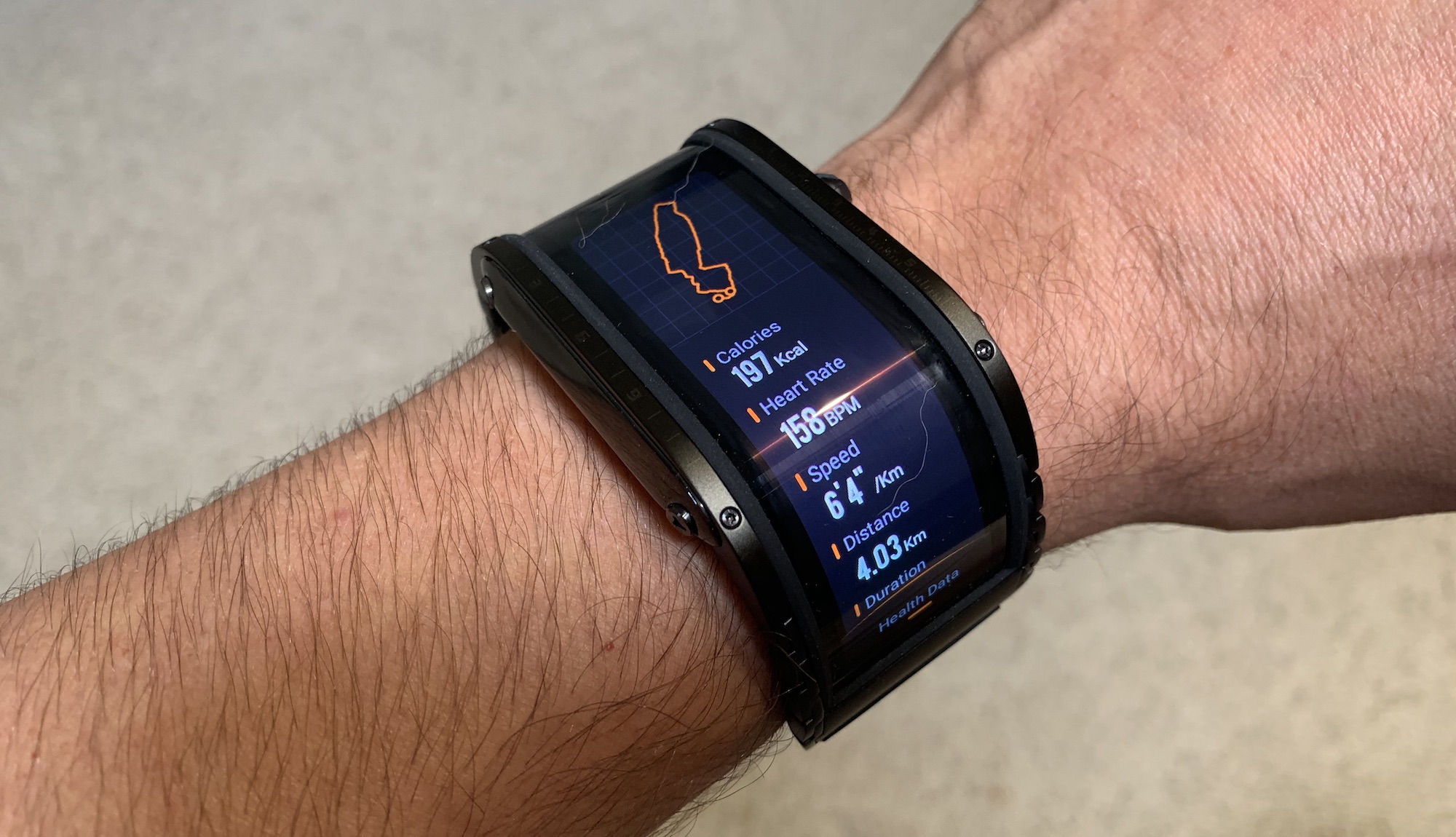
Nubia Watch: Health and fitness features
Selecting the Sports icon on the Nubia Watch presents you with four workout options: Free Workout, Outdoor Walking, Indoor Running, and Outdoor Running. That’s pretty limited, but it’s a start.
The Health icon gives you a complete rundown of all your stats for the day, such as light and deep sleep, resting heart rate, steps, distance run, and calories burned.
I took the Nubia Watch for a run, and on a cloudy day, it took about a minute for it to acquire a GPS signal. Its heart rate monitor seemed to be accurate, but there was a definite lag; it would take about 10 to 15 seconds before it showed an increase or decrease in my heart rate. I did like that the watch auto-paused the workout when I would come to a stop, such as at a traffic light.
Surprisingly for such a big screen, it was a little hard to read my performance stats as I was running. That’s because the Nubia Watch tries to cram in too much information; it would be great if you could customize the display to show the stats you want most. Like most touchscreens, I also found that the Nubia’s display became unresponsive when it was dripping with sweat.
Nubia Watch: Smartphone app
I tested the Nubia Watch with an iPhone. (It also works with Android devices.) The Nubia Watch app isn’t anything special: Its main screen shows you your step count, sleep, heart rate, and any photos you’ve uploaded. The Settings page lets you manage the watch, download music and pictures to the device, and set which apps on your phone can send notifications to the watch.
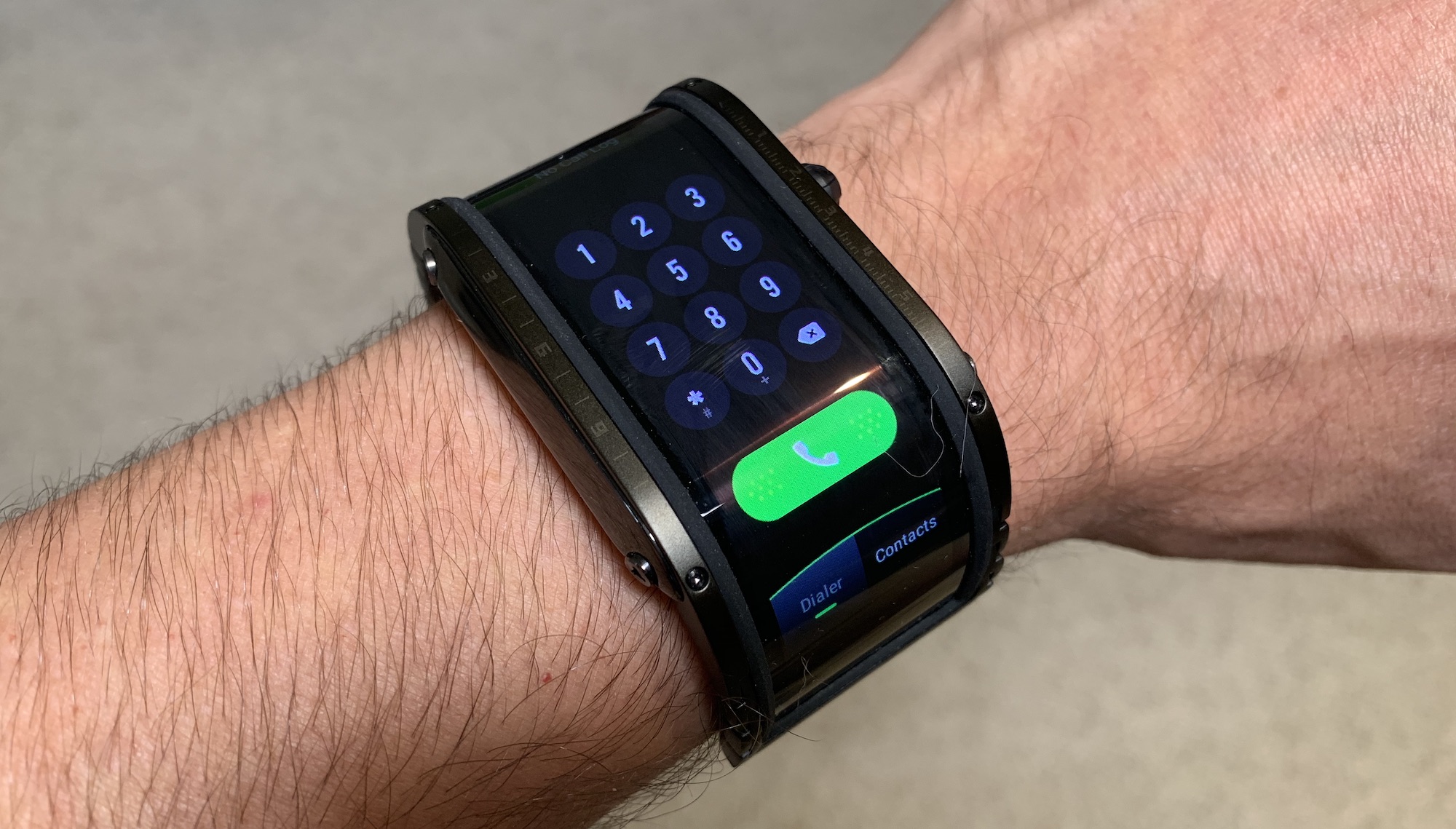
Nubia Watch: Battery life
Nubia claims that the watch’s 425 mAh battery will last up to 36 hours in smartwatch mode and 7 days in power-saving mode. That would be a fair amount longer than the 24-hour battery in the Apple Watch, and a little short of the Samsung Galaxy Watch 3, which we found lasts about two days on a charge. After roughly a day’s worth of use, which included a 30-minute run, the Nubia Watch was down to 25 percent.
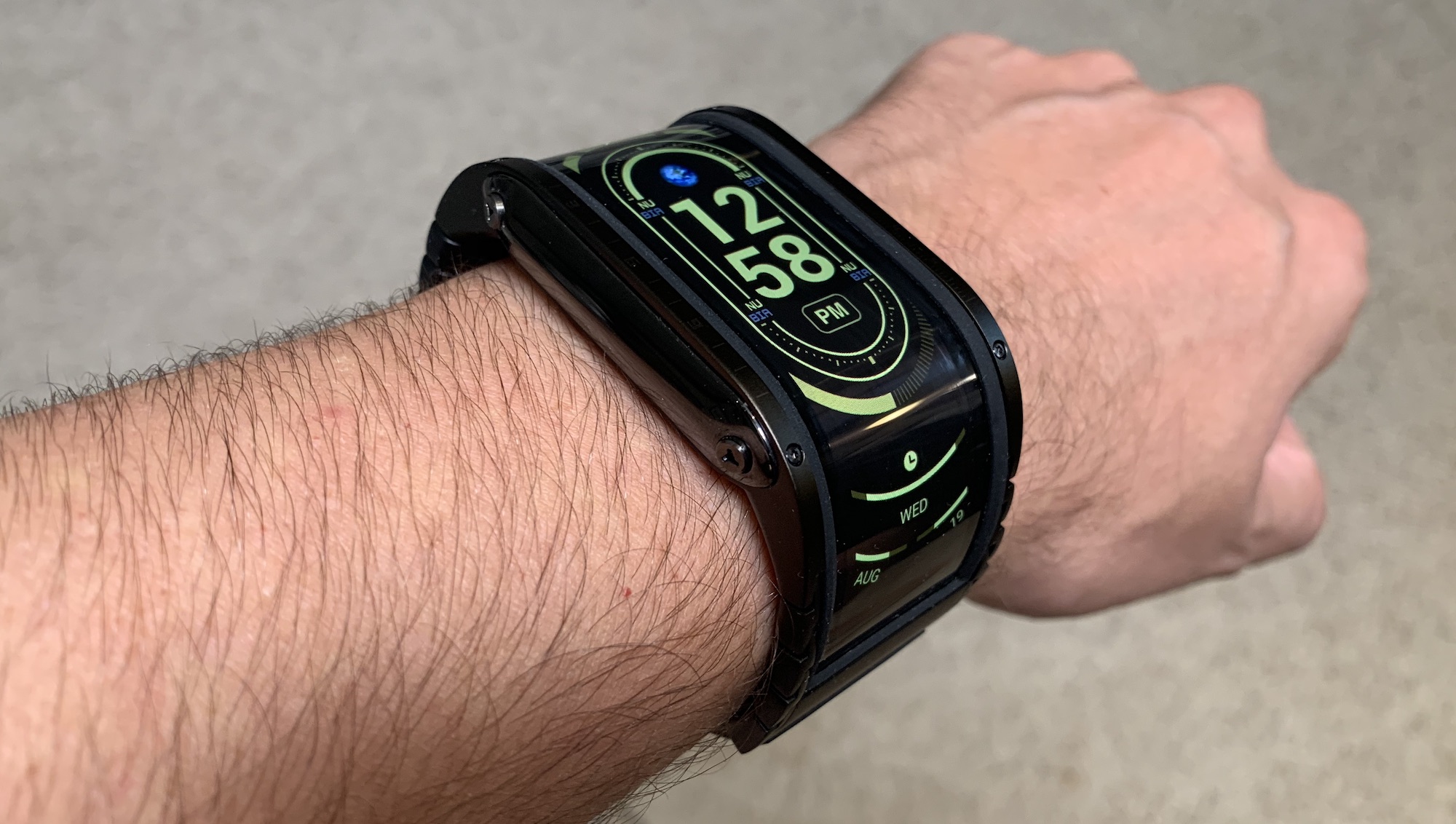
Nubia Watch: Outlook
We’ve seen wraparound smartwatches before, most recently Will.i.am’s two aborted attempts at wearables. But flexible displays seem to be the future of smartphones, so why not smartwatches, too?
Still, the size of the Nubia Watch, plus its proprietary operating system and lack of third-party apps makes this a cool-looking smartwatch, but one with a niche audience.

Michael A. Prospero is the U.S. Editor-in-Chief for Tom’s Guide. He oversees all evergreen content and oversees the Homes, Smart Home, and Fitness/Wearables categories for the site. In his spare time, he also tests out the latest drones, electric scooters, and smart home gadgets, such as video doorbells. Before his tenure at Tom's Guide, he was the Reviews Editor for Laptop Magazine, a reporter at Fast Company, the Times of Trenton, and, many eons back, an intern at George magazine. He received his undergraduate degree from Boston College, where he worked on the campus newspaper The Heights, and then attended the Columbia University school of Journalism. When he’s not testing out the latest running watch, electric scooter, or skiing or training for a marathon, he’s probably using the latest sous vide machine, smoker, or pizza oven, to the delight — or chagrin — of his family.
